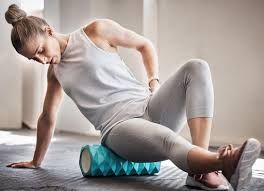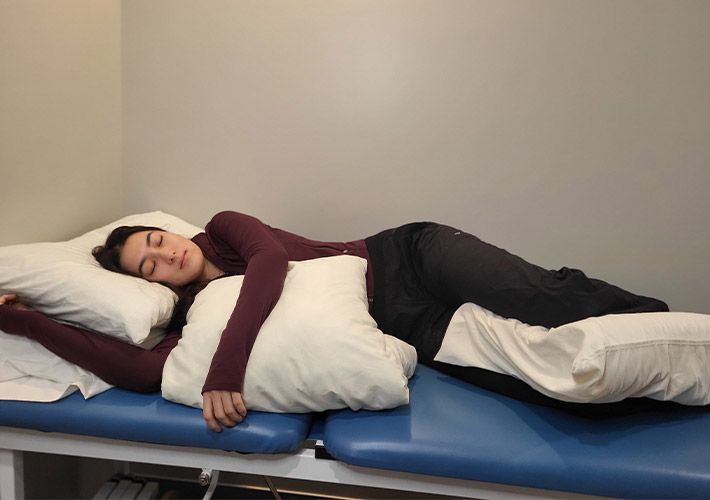Roll With It: A 10-Minute Full-Body Foam Rolling Routine That Your Muscles Will Thank You For

Whether you’re an elite athlete, a casual competitor, or someone who sits at a desk all day, foam rolling is a simple, effective way to show your muscles some love. It's like giving your body a do-it-yourself massage—no appointment necessary.
In just ten minutes a day, you can reduce muscle tension, improve flexibility, and help your body recover faster. At Peak Performance, we often recommend foam rolling to our patients as part of their home care, especially when paired with regular chiropractic and massage therapy. Here's everything you need to know to start rolling your way to a healthier, happier body.
What Is Foam Rolling?
Foam rolling is a form of self-myofascial release, a technique used to relieve tension in the fascia—the connective tissue that surrounds your muscles. By applying gentle pressure to certain areas of the body using a foam roller, you help break up adhesions and scar tissue, increase blood flow, and improve range of motion. Think of it as pressing the “reset” button on tight, overworked muscles.
Why Should I Foam Roll?
Here are just a few evidence-backed benefits of foam rolling:
- Reduced Muscle Soreness: Studies show foam rolling can decrease delayed onset muscle soreness (DOMS), helping you feel less achy after workouts.
- Improved Flexibility and Range of Motion: Rolling increases tissue elasticity and joint mobility, which is especially useful before workouts or long workdays.
- Better Circulation: Foam rolling boosts blood flow, helping oxygen and nutrients reach your muscles more efficiently.
- Faster Recovery: By helping flush out metabolic waste and reducing inflammation, foam rolling supports the recovery process.
- Enhanced Athletic Performance: Looser muscles move better. Period.
- Stress Relief: Gentle rolling stimulates the parasympathetic nervous system, promoting a calming, restorative effect.
Your 10-Minute Full-Body Foam Rolling Routine
This quick routine hits all the major muscle groups, top to bottom. All you need is a standard foam roller, a little floor space, and 10 minutes of your day. Roll slowly—about 1 inch per second—and when you hit a tight or tender spot, pause and breathe through it for 15–30 seconds.
1. Calves (1 minute total)
- Sit on the floor with your legs extended, roller under your calves.
- Lift your hips and roll from the ankles to just below the knees.
- Cross one ankle over the other to increase pressure if needed. Switch legs at 30 seconds.
2. Hamstrings (1 minute total)
- Keep your legs extended, but move the roller up to the back of your thighs.
- Support yourself with your hands and roll from just above the knees to the glutes.
- Focus on one leg at a time if you need deeper pressure.
3. Quads (1 minute total)
- Flip onto your stomach with the roller beneath your thighs.
- Roll from just above the knees to the hip bones.
- Try angling your body slightly inward and outward to hit different muscle fibers.
4. Glutes and Piriformis (1 minute total)
- Sit on the roller with one foot crossed over the opposite knee (like a figure 4).
- Lean toward the crossed leg side to target the glute and piriformis.
- Roll gently and switch sides at 30 seconds.
5. IT Band (1 minute total)
- Lie on your side with the roller under the outside of your thigh.
- Roll from the hip down to just above the knee.
- This one can feel intense—go slow and support yourself with your hands and opposite foot. Switch legs at 30 seconds.
6. Upper Back / Thoracic Spine (1 minute)
- Lie on your back with the roller under your shoulder blades.
- Cross your arms over your chest and lift your hips slightly.
- Roll from mid-back to the tops of the shoulders.
- Avoid rolling the lower back (more on that below).
7. Lats (Side of Upper Back) (1 minute total)
- Lie on your side with the roller under your armpit, arm extended overhead.
- Roll from the armpit to mid-ribcage.
- This can be a tender area—adjust pressure as needed. Switch sides at 30 seconds.
8. Chest / Pec Minor (30 seconds each side)
- Lie face down with the roller angled under your chest near your shoulder.
- Gently roll from the front of your shoulder toward your sternum.
- Keep your other arm out for balance.
9. Neck / Upper Traps (1 minute)
- This area is best done with a softer roller or even with tennis balls.
- Lie on your back with the roller under the base of your skull.
- Gently nod your head “yes” and “no” to release tension in the neck and traps.
Foam Rolling Tips from the Pros
- Breathe! Holding your breath increases tension. Deep, calm breathing helps muscles relax.
- Don’t Overdo It: A little goes a long way. You’re not trying to cause pain—just pressure.
- Skip the Lower Back: Rolling directly on the lumbar spine can cause strain. Instead, focus on rolling the surrounding muscles like the glutes and thoracic spine.
- Be Consistent: Like stretching, foam rolling works best when done regularly. Even a few minutes a day can make a big difference.
Make It Part of Your Routine
Foam rolling can be used pre-workout to warm up, post-workout to cool down, or any time you feel stiff or sore. Pair it with regular chiropractic adjustments and therapeutic massage to keep your muscles, joints, and nervous system in tip-top shape.
At Peak Performance Chiropractic & Massage, we often incorporate foam rolling into our patients’ rehab and recovery plans. It’s a simple tool, but when used properly, it supports everything we do in the office—from improving mobility to reducing pain and promoting faster healing.
If you're unsure where to start or want personalized guidance, ask your chiropractor or massage therapist during your next appointment. We’re happy to demonstrate techniques or recommend specific rollers based on your body type and needs.
Let’s Roll
Taking care of your body doesn’t have to be complicated. Ten minutes, a foam roller, and a little patience can help you move and feel better—whether you’re crushing workouts, chasing kids, or grinding through 9-to-5.
Ready to up your recovery game? Book an appointment at Peak Performance and let us help you find your best rhythm—on and off the roller.
Need help finding the right roller or learning how to use it effectively? Ask us during your next visit—we’re here to help you move better, feel better, and live better.
Serving Buffalo, NY and beyond with evidence-informed chiropractic and massage care. Let’s get you back to peak performance.
Bethany Wolcott
(she/her)
Exercise and Sports Studies/Chiropractic
D’Youville University












